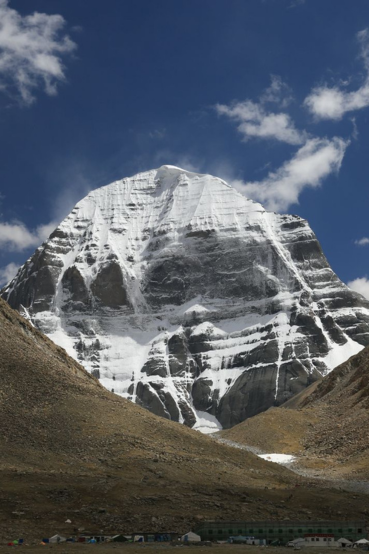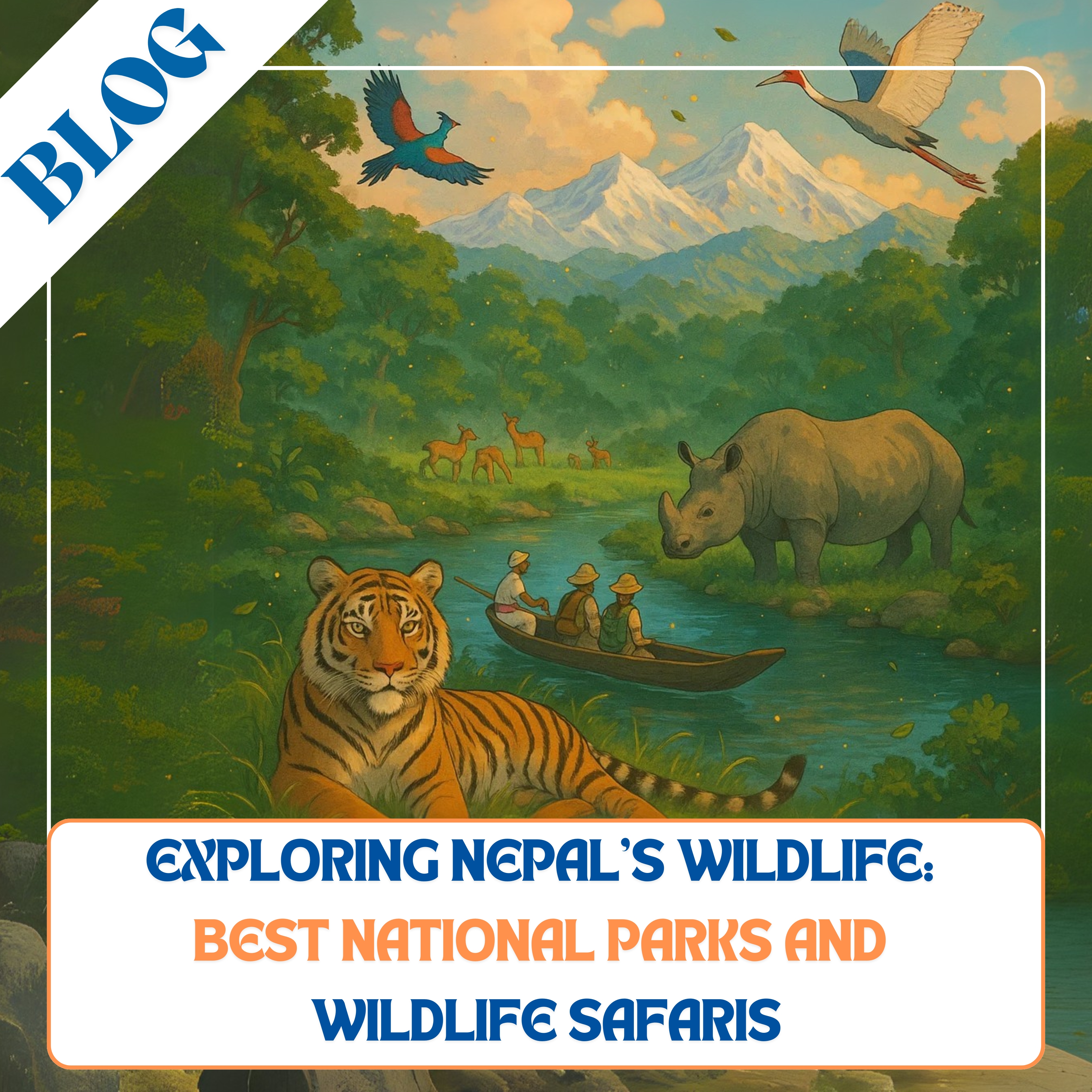Even though Nepal is only accessible by land, the Himalayas enclosing it, its peaks and spiritual traditions are famous, but so is its rich and diverse wildlife. Thanks to having some unbelievable national parks, Nepal provides exciting safaris that take you into pristine areas in nature. Those who love nature and adventures can take part in Nepal wildlife safaris and enjoy rare animals, beautiful birds, and clean environments.
In this article, we plan to visit Nepal’s most remarkable national parks and see what draws people to see wildlife in these places. No matter if you are an experienced safari traveler or simply eager to spot tigers, rhinos, elephants, and other animals, Nepal’s wildlife safaris give you a real and memorable experience.
Why Choose Nepal for Wildlife Safaris?
The first thing that usually comes to mind while thinking of wildlife safaris is the wide plains of Africa. Still, Nepal is a one-of-a-kind destination for residents and visitors who like wildlife. Being relatively small, Nepal still has an impressive selection of habitats ranging from the grassland to the mountains.

There is something truly magical about Nepal wildlife safaris because the unique ecosystem holds more than 900 types of birds, over 125 kinds of mammals, and numerous reptiles and amphibians. Because India protects its natural areas, the country is a home to the Bengal tiger, one-horned rhinoceros, and snow leopard, and provides shelter for many other types of living creatures.
In addition, Nepal’s parks are effectively managed and have various safari activities for visitors to select, such as group driving in jeeps, riding on elephants, canoe trips, and walks through the jungle. It means people can choose how close to nature they get, either on a thrilling ride or a relaxing way along the water.
Top National Parks in Nepal for Wildlife Safaris
You can visit 12 national parks, many wildlife reserves, and conservation areas in Nepal, and all of them are different and home to unique wildlife. Here we present the best national parks in Nepal that allow you to enjoy a wonderful safari:
1. Chitwan National Park
Since it was created in 1973, Chitwan National Park is considered the most renowned and easily reached destination for going on wildlife safaris. Chitwan is located in the Terai lowlands of Nepal, near the tropical belt, and has attracted UNESCO’s attention for its forests, vast grasslands, and waterways.
Wildlife Highlights:
The Park offers shelter to the country’s most iconic wildlife. Nestling in thick grasslands and forests, the park gives shelter to the one-horned rhinos, which are in danger of extinction. People visiting the park could see the Bengal tiger, which represents the park’s healthy ecosystem.
In addition to the bigger mammals, Chitwan has a great variety of animals such as Asian elephants, sloth bears, and the Indian bison (gaur). Many bird lovers will appreciate seeing over 500 bird species, many of which are colorful like the Indian roller, and some rare species, such as the Bengal florican.

Safari Experiences:
You can enjoy Chitwan’s wilderness by taking part in different types of safaris. With a jeep safari, you have a fun and exciting way to travel through multiple areas, and your sightings of animals may include rhinos, deer, and even tigers.
Getting in touch with nature in a peaceful way, by canoeing the Rapti or Narayani rivers, lets you see crocodiles, otters, and several kinds of birds. Exploring the forest on a guided walk gives you a clear view of not only big animals but also of interesting insects and vegetation.
2. The Bardia National Park
Nature lovers and visitors searching for solitude in nature will enjoy Nepal’s Bardia National Park, which is located in the country’s west. It is also the biggest national park in the Terai region and, since it is more remote, visitors can explore nature and wildlife here without as much noise and crowds as Chitwan.
Wildlife Highlights:
Visitors to Bardia can enjoy a quieter and untouched environment than in some of Nepal’s other parks. Thanks to the high number of Bengal tigers in the area, people hoping to see this amazing animal will have a great chance here.
Apart from tigers, Bardia protects one-horned rhinoceroses and wild elephants that live in the wide grasslands and forests of the park. The swamp deer and rare gangetic dolphin are found in the waters of the park.
A number of birds live here, some of which are close to extinction like the Bengal florican and the lesser adjutant stork, which makes it pleasing for those interested in birds.

Safari Experiences:
Visiting Bardia on a safari gives you the opportunity to enjoy the park’s nature on both an elephant safari and in a jeep. Guided safaris through the buffer zone that let everyone walk and enjoy the nature make the park stand out for its closeness to the wild. You can also see crocodiles and river dolphins, as well as appreciate the landscape’s serenity, when you go on a river tour in Bardia.
3. Sagarmatha National Park
Even though Sagarmatha National Park in the northeast of Nepal is best known for Mount Everest, it also gives visitors the chance to do unique wildlife safaris at high altitudes. The Park is an additional UNESCO World Heritage Site and is inhabited by Himalayan species that are not very common.
Wildlife Highlights:
As well as serving as the door to Mount Everest, Sagarmatha National Park provides habitats for both rare and extraordinary Himalayan wildlife. It is the park’s high altitude that helps the snow leopard survive, but they are very difficult to spot because they are secretive.
The Himalayan tahr and the musk deer are among the other notable animals residents of these regions. You can see the colorful Himalayan monal, the country’s national bird, as well as pheasants and eagles cruising over the mountains in Nepal. Also at this park are the adorable and timid red pandas.

Safari Experiences:
Travelers on a wildlife safari in Sagarmatha also embark on treks, which gives them an opportunity to walk through the Himalayas. Going on a safari this way gives you the chance to see wildlife among scenic mountains.
Everyone who visits the region enjoys birdwatching, as guides can help find the unique Himalayan birds that are hard to spot. Taking part in this experience is exciting as it includes climbing the rock walls and seeing wildlife up close, which interests both nature fans and thrill-seekers.
4. The Parsa National Park
In the south of Nepal, Parsa National Park is fairly new and gives visitors a rare chance to go on a wildlife safari. This area connects Chitwan with Valmiki Tiger Reserve in India.
Wildlife Highlights:
Parsa National Park is becoming known for its wildlife, since it shelters Bengal tigers and one-horned rhinoceroses. The Park helps keep wildlife migration between Nepal and India.
People coming to Parsa can spot many types of deer and wild boars moving in the area’s forests and meadows. More birds migrate in the winter, so the park attracts birdwatchers who would like to see many different migratory species then.

Safari Experiences:
Most people in Parsa National Park go on safaris in jeeps as they pass through its habitats. During these tours, guests can search for big mammals as well as many types of birds. Being led on a walk in the jungle gives visitors more chances to see the forest’s plants and smaller animals, as well as experience its elaborate ecosystem.
Visiting the park in winter on one of the birdwatching tours can give you a chance to see Nepal’s migratory birds and see the park’s unique richness in nature.
5. Koshi Tappu Wildlife Reserve
The Koshi Tappu Wildlife Reserve is a perfect place for bird lovers. Many water birds and wild animals live in the areas of wetlands, grasslands, and floodplains in the reserve.
Wildlife Highlights:
Koshi Tappu Wildlife Reserve is famous worldwide for having more than 500 species of birds. The wetlands, floodplains, and grasslands form perfect habitats for birds like the Bengal florican and the elegant sarus crane that are hard to find anywhere else.
As well as birds, wildlife enthusiasts in Koshi Tappu can observe wild water buffalo, crocodiles, and fishing cats living there. Since the reserve’s water houses a colorful range of aquatic life that draws both traveling and homebound species, nature fans enjoy going there.

Safari Experiences:
Seeing the wetland sanctuary at leisure by boat safari on the Koshi River is peaceful and enjoyable. Moving gently along the water gives tourists a good chance to observe birds, crocodiles, and other riverside creatures. Taking a jeep safari means visiting the reserve’s different habitats, so you have a better chance of noticing different mammals and birds.
Taking a tour with a guide allows visitors to learn a lot about bird species in the reserve and may help them discover rare and endangered birds.
Best Time for Nepal Wildlife Safaris
Picking the perfect time to come to Nepal’s national parks will make your wildlife safari much more enjoyable. Depending on what you look for and the type of environment you enjoy, every season creates its own opportunities and problems.
Those who wish to go on a wildlife safari in Nepal should choose the time from October to March, which is the middle of the dry season. Because animals tend to be near rivers and watering holes, it becomes easier to see them during this period. It is not very warm, making it comfy to go on safaris and walks in the wild.
During these months, early spring allows the parks’ vegetation to flourish and makes them very attractive. Birdwatchers find it a wonderful time because birds are busy breeding during this period. Since it gets warmer at this time of year, safari lovers might be lucky to see newborn animals, giving the experience even more meaning.

Wildlife safaris should be avoided in the July to September period because it’s the monsoon season. As a result of heavy downpours, trails tend to become slippery, certain roads can flood, and it becomes hard to spot animals, so some safari trips may have to stop. But, at this time, the area becomes very green and fertile, providing another side of beautiful nature for people who don’t mind some bad weather.
In general, wildlife lovers should go to Nepal’s national parks between October and March, because the weather is comfortable and the chances of seeing wildlife are very high.
What to Expect on a Nepal Wildlife Safari
Vehicles and the Guides Equipped
Usually, safaris at national parks in Nepal are done in open jeeps, and people taking part are guided by experts who give wonderful explanations about the animals and plants. There are places where walking safaris give people a closer connection with nature.
Wildlife Sightings
While wildlife sightings cannot be guaranteed, Nepal’s national parks are very successful, mainly for catching sight of rhinos, deer, and plenty of birds. For those rare tigers and snow leopards, one needs a lot of patience and the luck to visit the park a few times in search.
Cultural Interactions
Many visits to wildlife areas in Nepal give travelers a chance to interact with nearby ethic groups, for example, the Tharu community in Chitwan, who are very connected to the forest and its inhabitants. The experiences are improved when different cultures share and understand one another.

Tips for a Successful Nepal Wildlife Safari
Dress Appropriately: Wear neutral colors like khaki or green, comfortable shoes, and carry sun protection.
Pack Binoculars and Cameras: Bring zoom lenses and binoculars for bird and wildlife spotting.
Listen to Your Guide: Their expertise will help you spot animals and understand their behavior.
Respect Wildlife: Keep noise low and maintain a safe distance.
Stay Hydrated and Prepared: Carry water and light snacks for longer safaris.
Conservation and Responsible Tourism in Nepal
The conservation of the one-horned rhino and Bengal tiger in Nepal demonstrates how dedicated the country is to maintaining the environment. Revenues from tourists allow money to be used for running the park, preventing poaching, and aiding community groups.
Going on a Nepal wildlife safari helps form a cycle that benefits local people. By opting for eco-friendly resorts and abiding by park laws, we can make these special places last for people in the future.

Conclusion
Nepal has many options for people fascinated by wildlife, because it blends adventure, nature, and culture. Roaming in forest jeeps in Chitwan and observing birds in Koshi Tappu are ways to meet the amazing wildlife found in Nepal’s national parks.
Due to the many kinds of landscapes, animals, and types of safaris, everyone will find some attractions to enjoy. No matter if your dream is to watch the rare snow leopard or the mighty rhino, a safari in Nepal is bound to be thrilling and impressive.
Planning a trip soon to discover the amazing wildlife in Nepal is a great idea. Cover more trails, be left amazed by the wild, and make memories that won’t be forgotten. The wildlife safaris in Nepal are ready for your visit.








